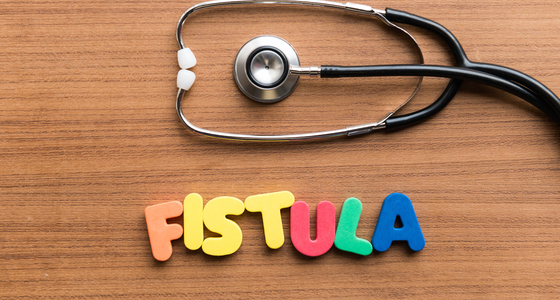There are a few different examinations and tests which may be used to diagnose a fistula.
To diagnose an anal fistula a combination of different examinations and tests may need to be done.
As well as taking a history of your symptoms the diagnosis process can include:
They are looking to find out where the anal fistula openings are, where the fistula tunnel (tract) goes and if it passes through the sphincter muscle, if it has just one channel or several channels and if you have an infection.
The doctor will look at the area around your anus (bottom) to look for signs of an anal fistula. They are looking for any small holes in the skin or raised red spots and/or any discharge coming out of the skin around the bottom. They may push on some areas to see if this causes any pus, blood or poo to be discharged from a hole in your skin.
You may be asked by the doctor if they can do a rectal examination. This is where the doctor gently inserts a finger into your bottom. They will be wearing gloves and will use a lubricant to make it more comfortable for you. They will feel inside your bottom to see if there are any abnormalities.
If the doctor thinks you have an anal fistula then you may be referred to have some tests to look in more detail at the fistula and the location of the internal opening.
Endoscopy tests for anal fistula
An endoscope is a long, thin tube with a small camera or lens inside. There are specially designed endoscopes that can go into your bottom to take a look inside. Some of the different kinds of endoscopy tests which might be used to help diagnose an anal fistula include:
Anoscope - A short tube fitted with a light and magnifier that allows the doctor to look at the anus and rectum
Proctoscopy - This is a short instrument with a light and a lens that can be used to view inside the anus and rectum
Flexible sigmoidoscopy - This is a longer flexible tube that is inserted into the bottom and up to the sigmoid colon, the first bend in the colon. The tube has a small light and camera inside. You may need to take a laxative the day before the test to clear out your bowel
Colonoscopy - This is a longer flexible tube that is inserted into the bottom and is used to view the whole colon. The tube also has a small light and camera inside. If you have this test you will need to take a laxative the day before to clear out your bowel
MRI
An MRI can help to map out the fistula and the surrounding muscles, as well as predicting prognosis, make treatment decisions and monitor any therapy being given1. It uses magnetic fields and radio waves to create an image of the area being scanned. MRI scans are often used when an anal fistula keeps coming back or if it’s thought to be complex.
Endoscopic ultrasound
Endoscopic ultrasound uses high-frequency sound waves to make an image of the inside of your body. To do the test the endoscope is inserted into your bottom. It is a good way of identifying where the internal opening of the fistula is and mapping out where it is in relation to the surrounding sphincter muscles and tissues.
Fistulography
In a fistulography X-ray contrast is injected before an X-ray is done. This helps to identify the anal fistula tract. This test is less commonly used now.
Examination under anaesthesia (EUA)
Sometimes it’s necessary to use general anaesthetic (being put to sleep) to examine an anal fistula. This might be because doing the examination will be painful and/or because it’s important to have the anal sphincters and pelvic floor muscles fully relaxed.
Fistula probe
This is a specially designed instrument that can be inserted into the fistula. This is used to identify the fistula tunnel.
https://fascrs.org/patients/diseases-and-conditions/a-z/abscess-and-fistula
https://www.nhs.uk/conditions/anal-fistula/
https://www.mayoclinic.org/diseases-conditions/anal-fistula/diagnosis-treatment/drc-20537243

